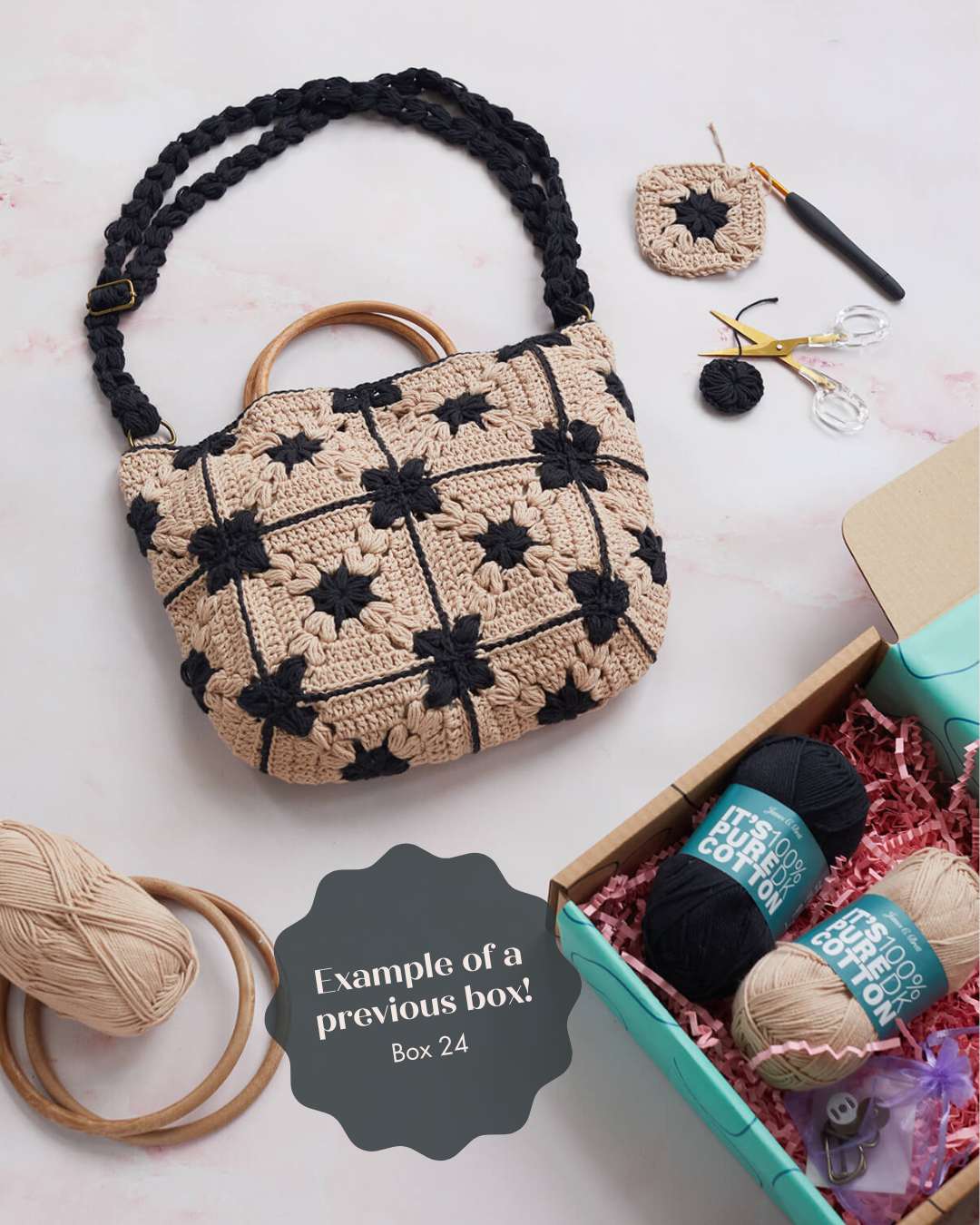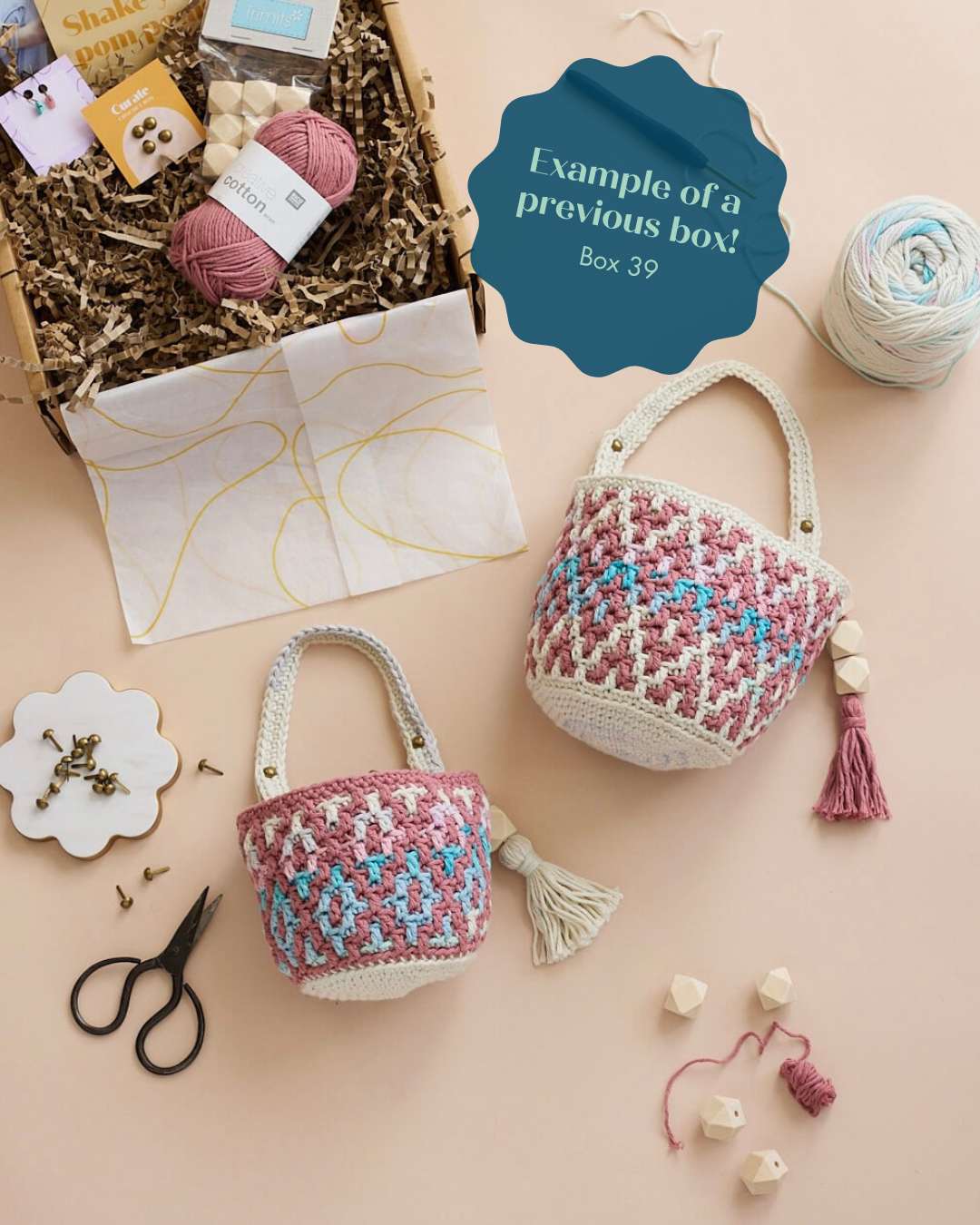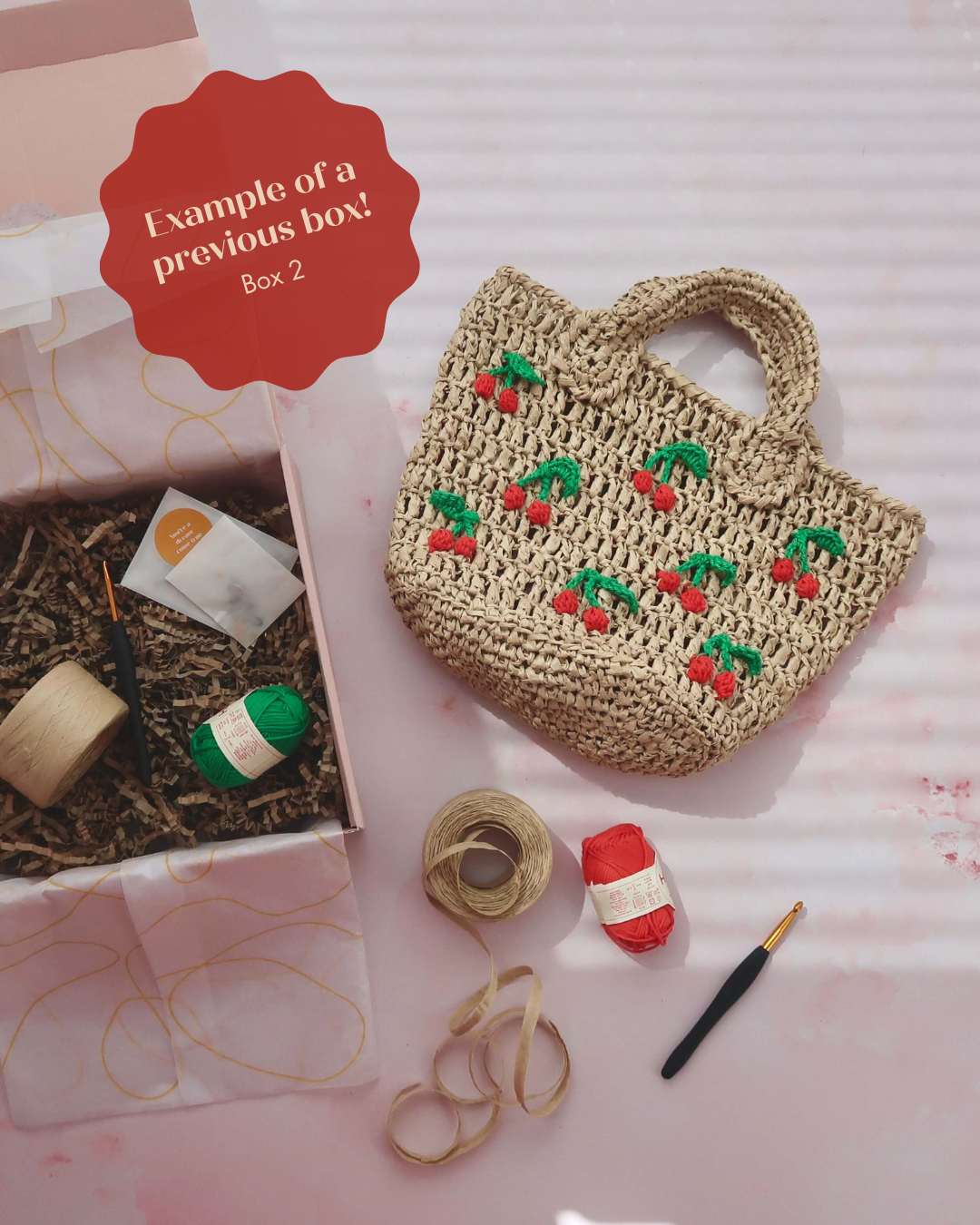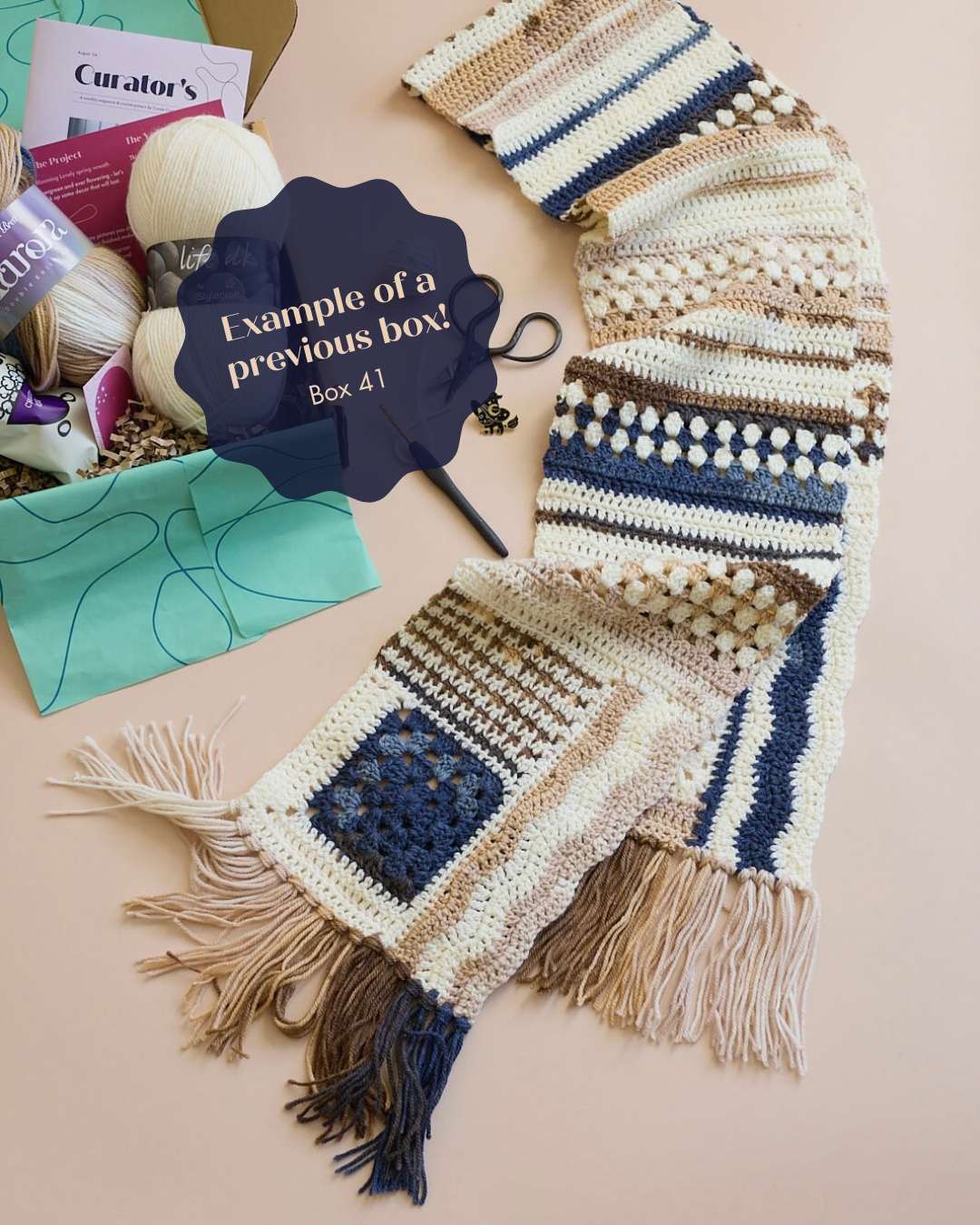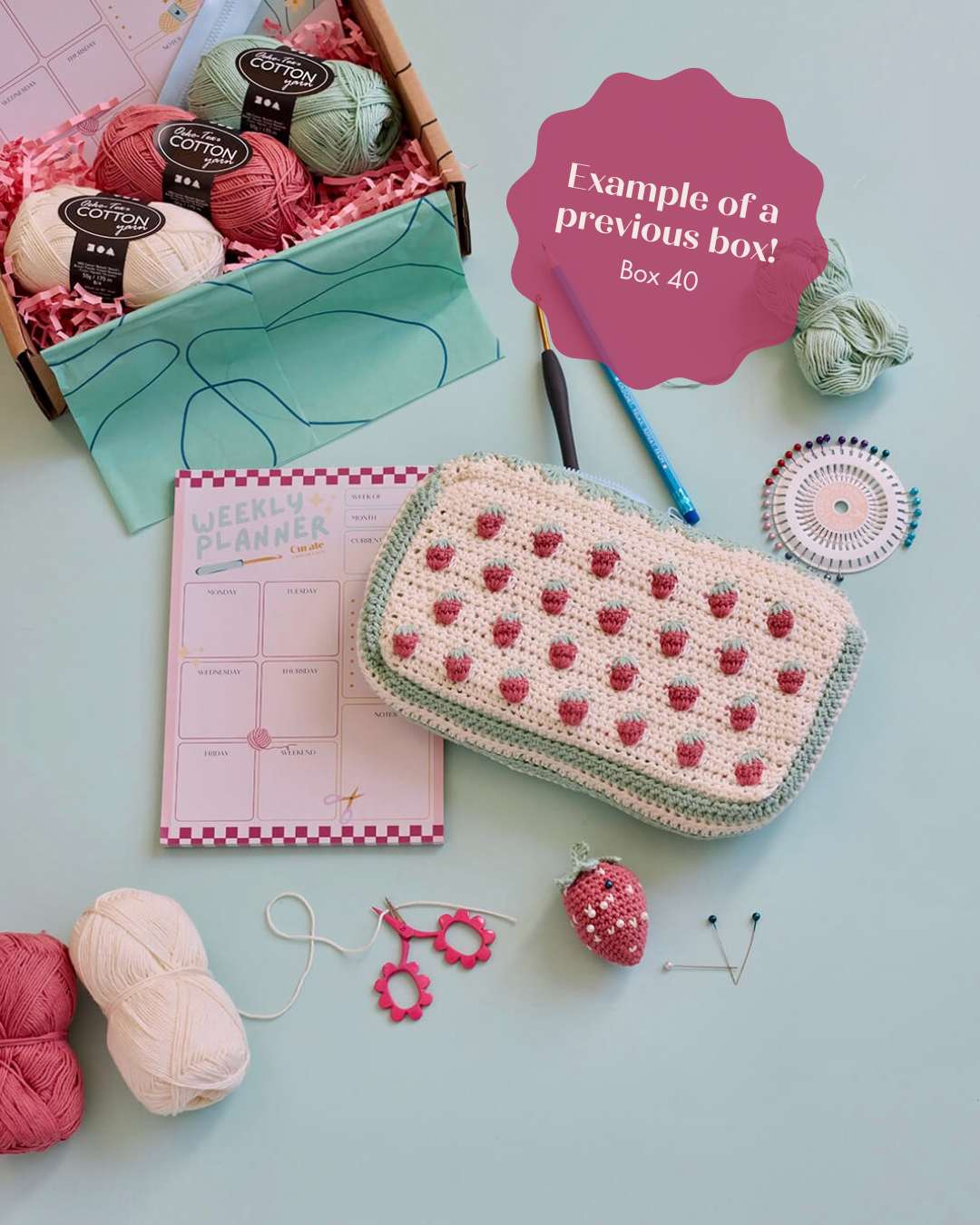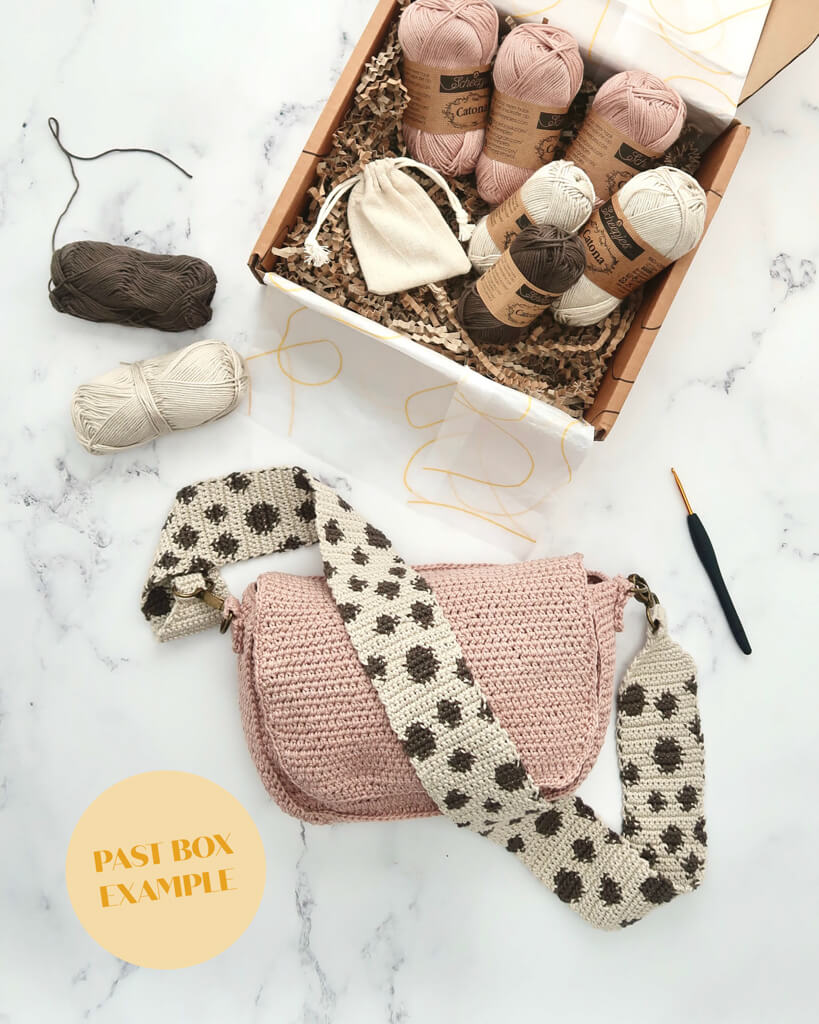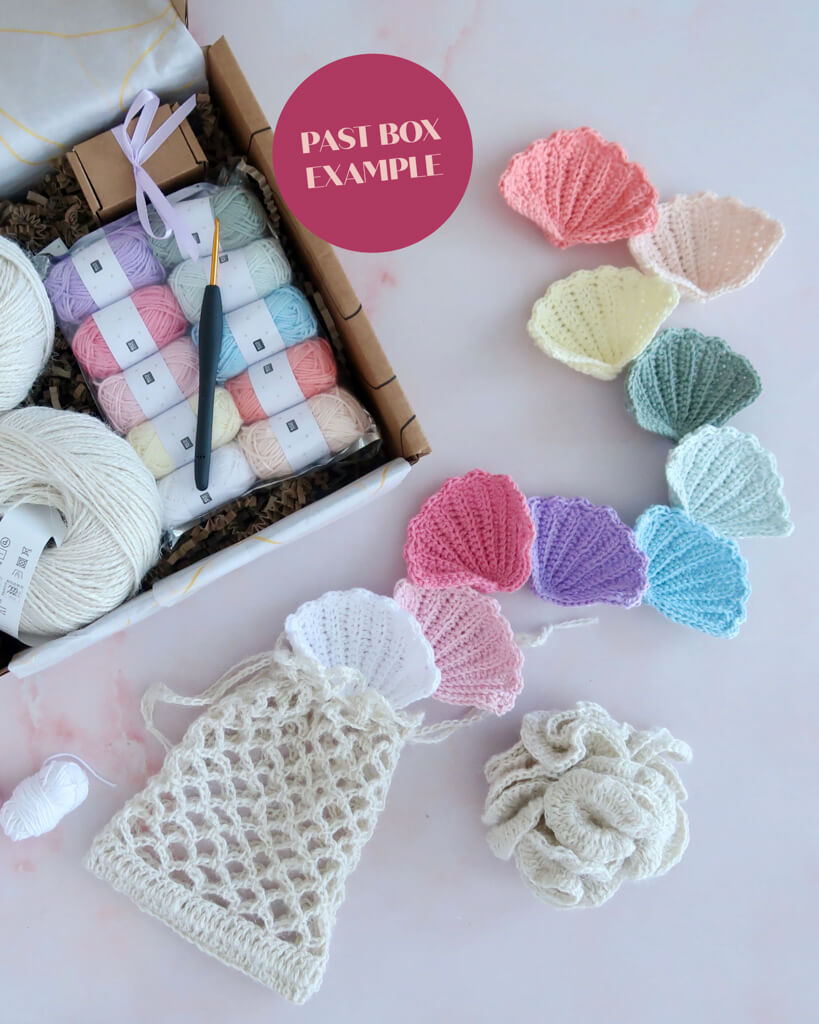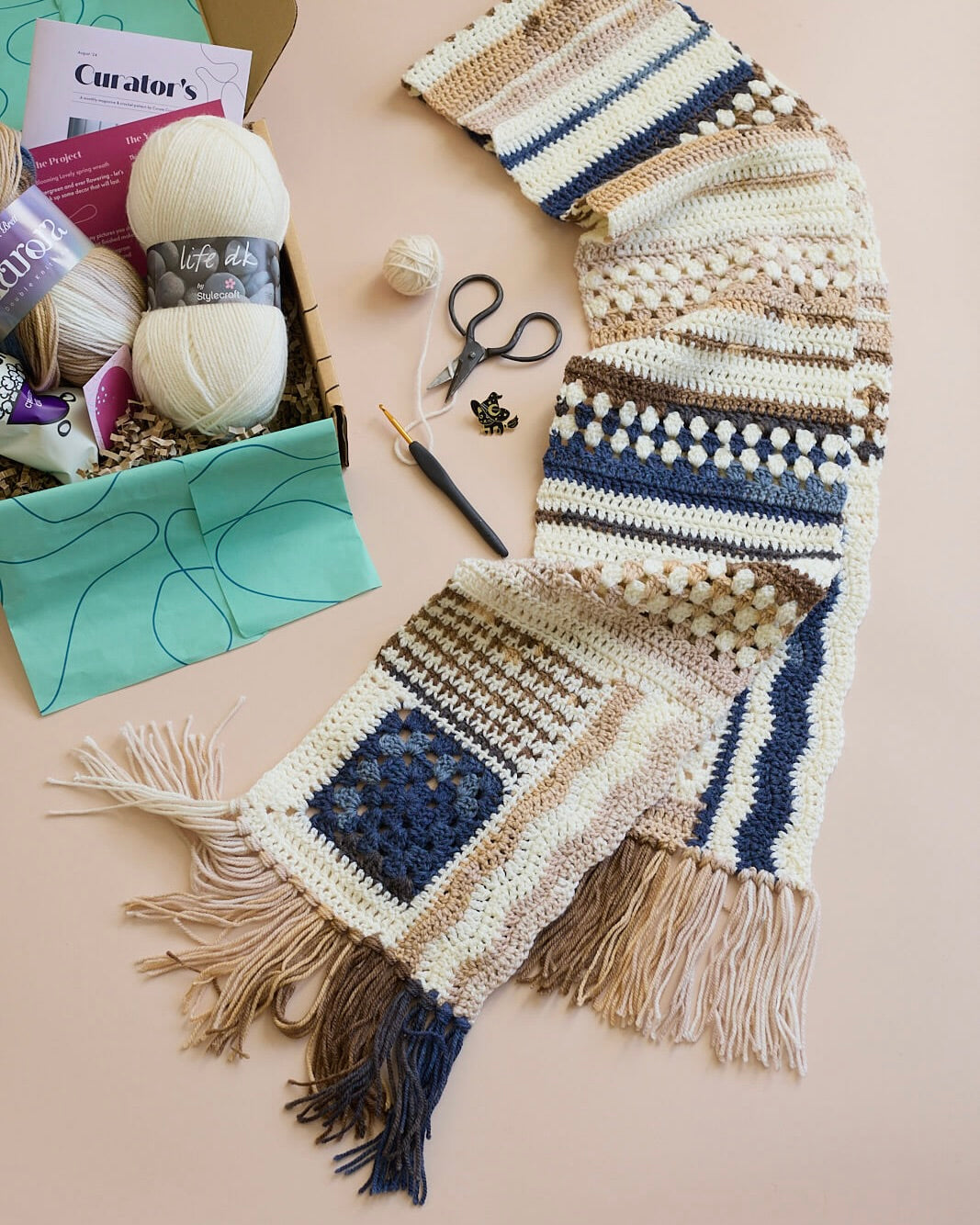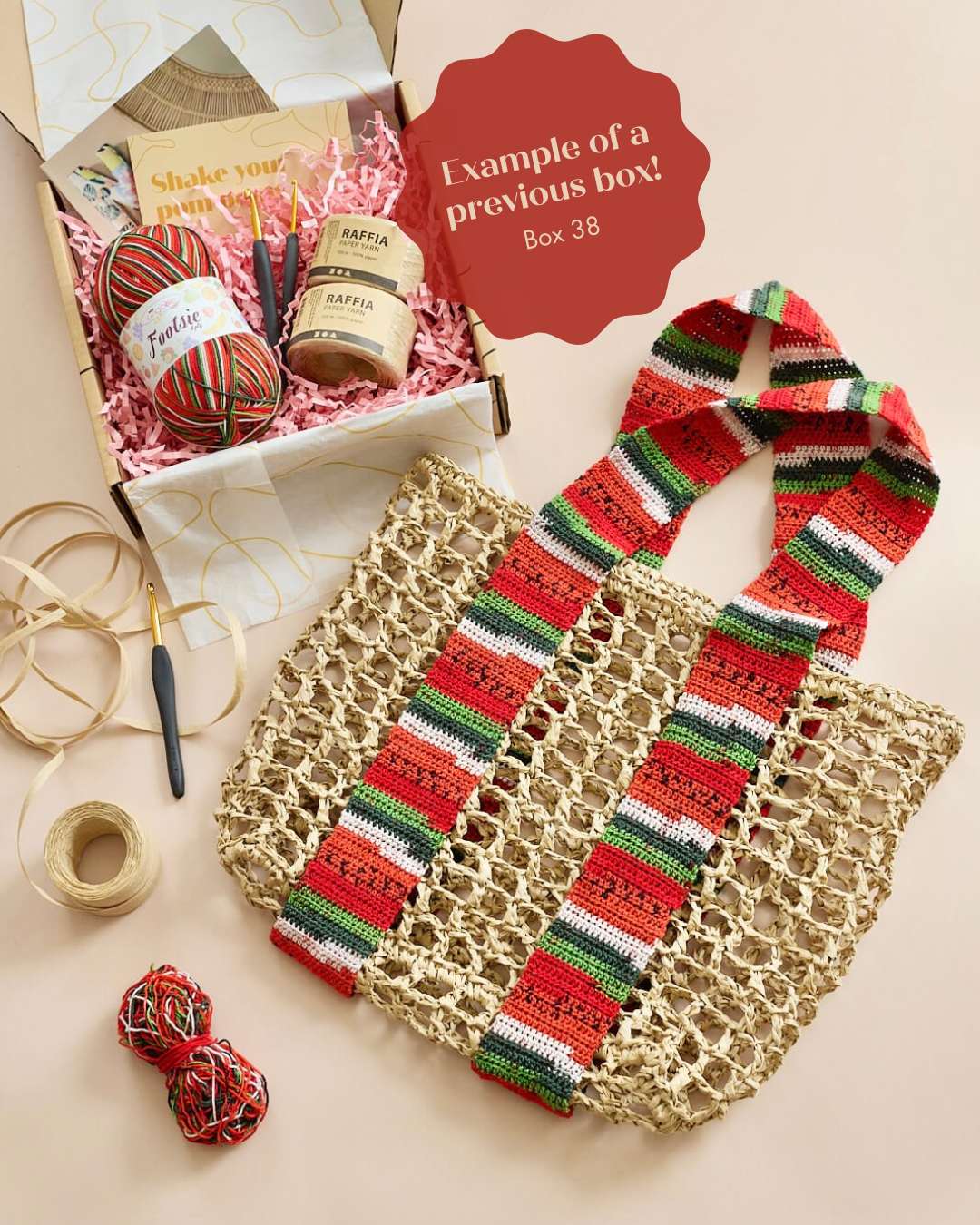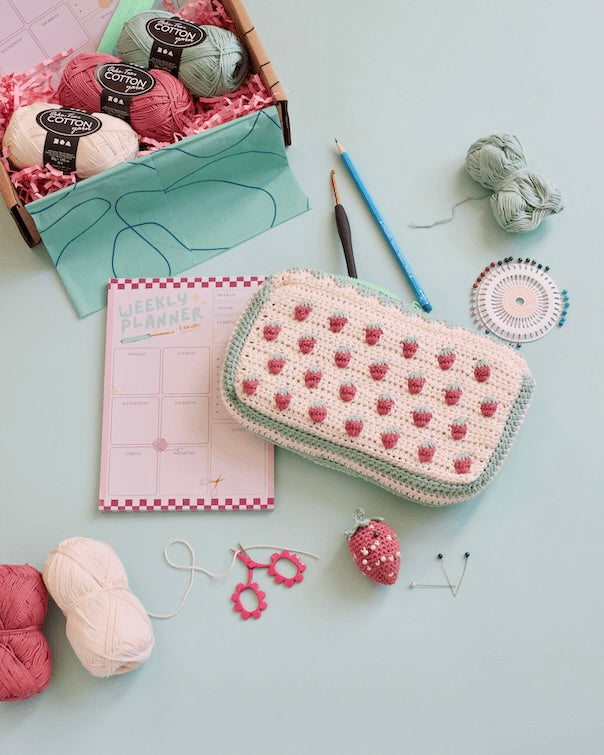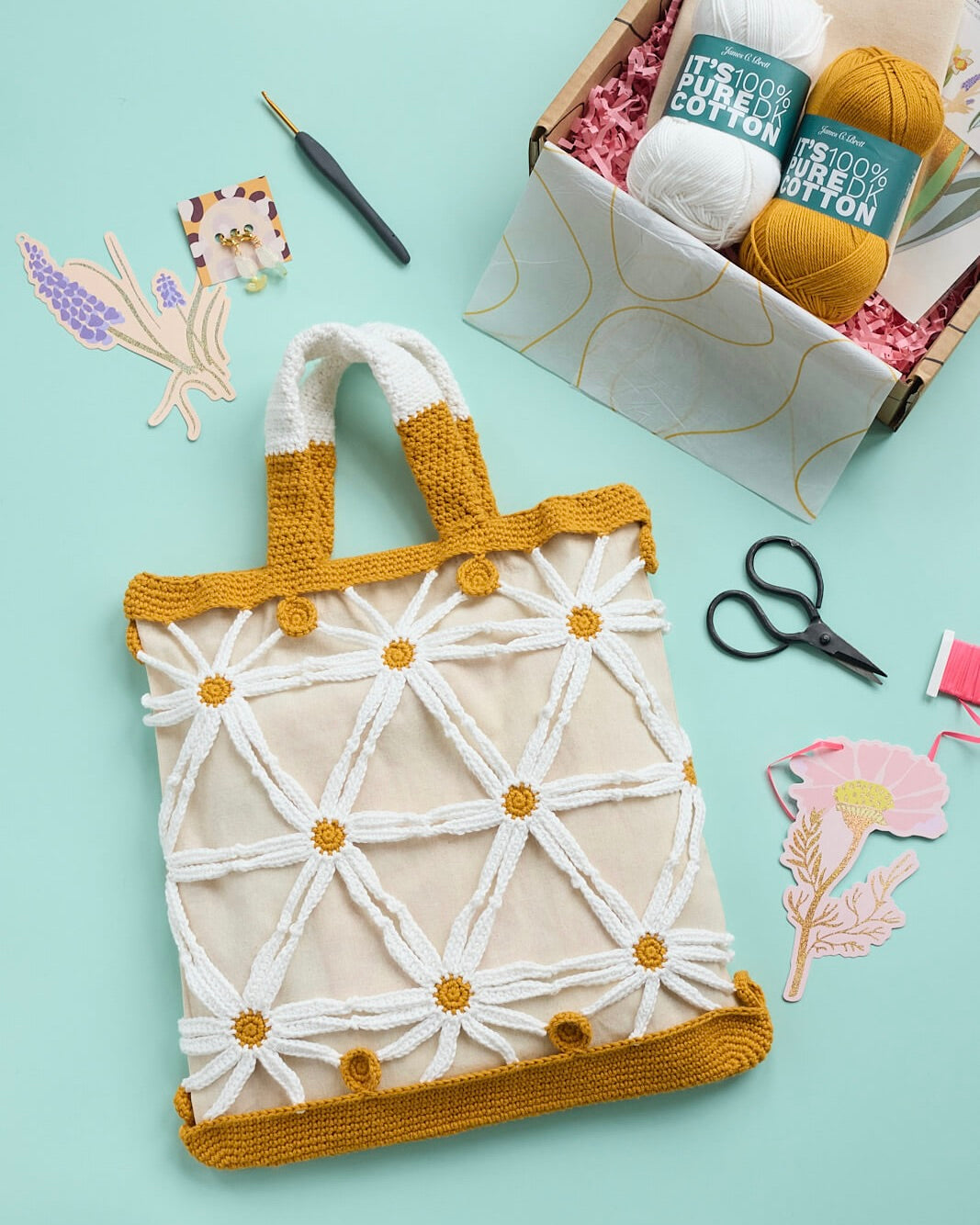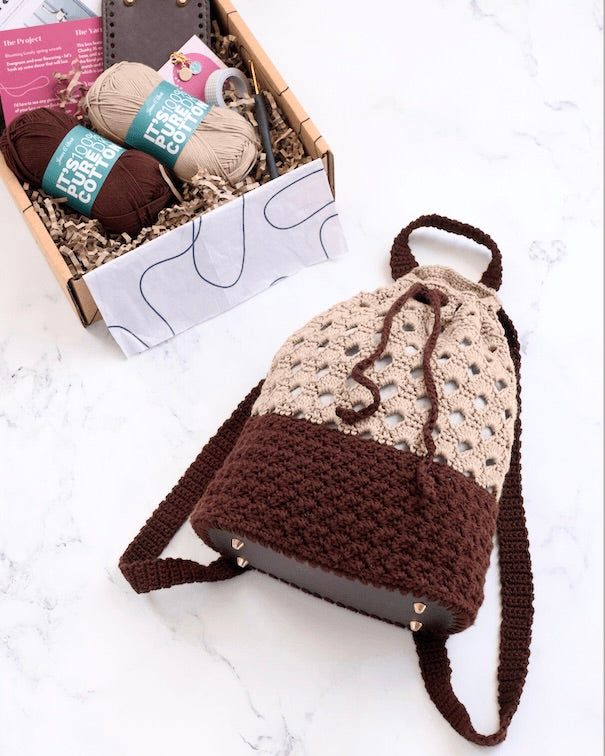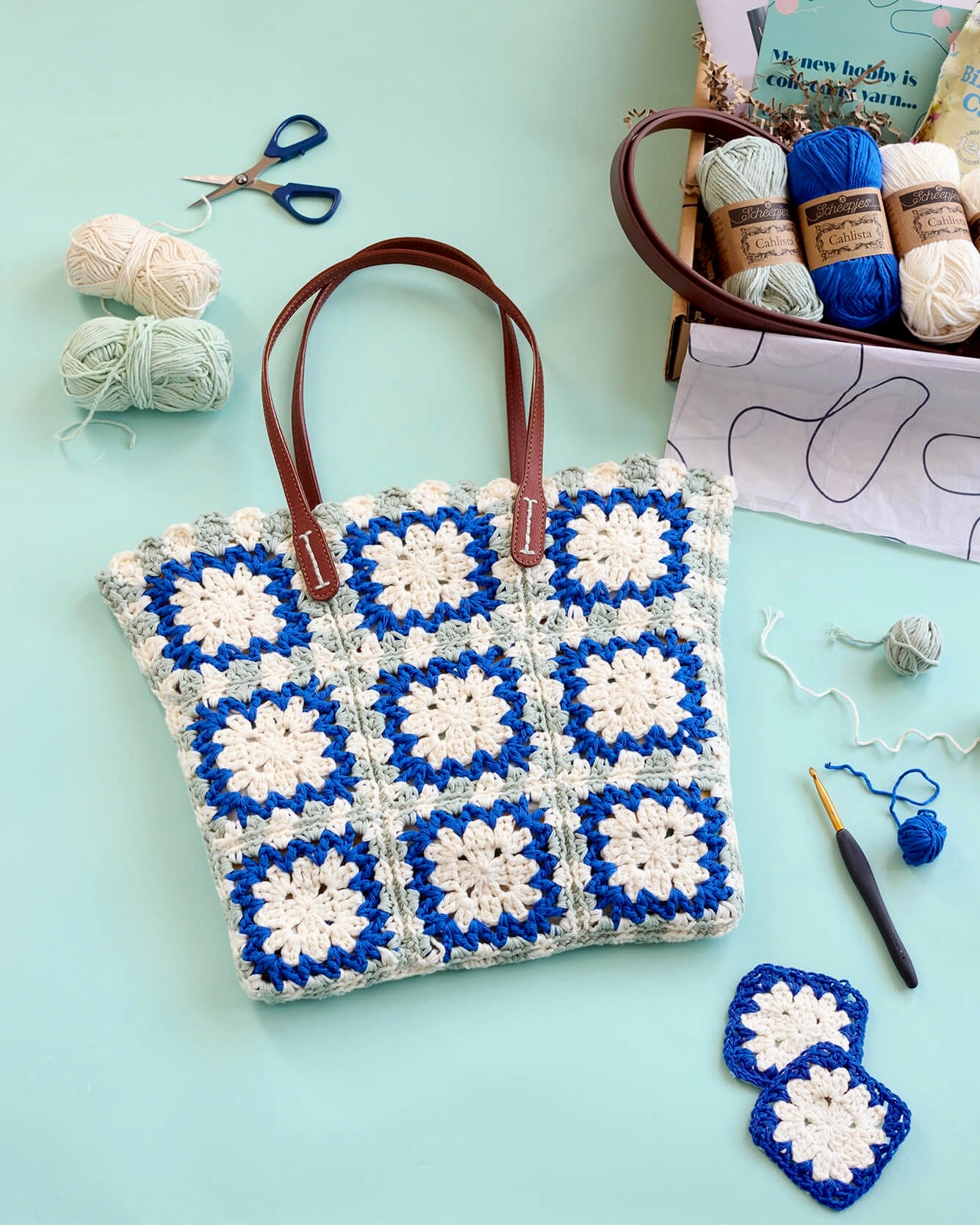Macrame Hoop
Included in your kit
Wooden hoop
12m chunky yarn in 2 colours
You may also need
Scissors
Step 1
Cut each of your colours into 6 x 1m pieces.
Step 2
Attach the cut lengths to the hoops using a lark’s head knot. To make the knot, fold each length of yarn in half to create a loop at the midpoint. Pass the knot under and back over the top of the hoop, then bring the tail ends of the two strands of yarn through the loop from back to front. Pull firmly to secure, lark’s head knot formed. Place the 6 green cords on the left, and the 6 white cords on the right.

Step 3
Now that the 12 strands are attached to the hoop, we will treat them as 24 strands.
Find the centre two strands and cross them over at the very top of the hoop, then pass them underneath the hoop at the bottom, pulling the strands taught as you do so.

Step 4
Attach these two strands to the base of the hoop using a double half hitch knot, placing it directly below the outermost lark’s head knot in the opposite colour at the top of the hoop.
To form a double half hitch knot, start with the strand underneath the hoop, then wrap the strand from the front up and over to the back again, working to the left.

Step 5
Wrap the strand from the front up and over to the back a second time, but this time on the right-hand side. When you bring the strand down behind the hoop, pull the tail end of the strand through the loop just formed. Pull firmly to tighten. Double half hitch knot formed.

Step 6
Repeat this process: find the next two strands out from the middle at the top of the hoop and cross them over at the front. Pass the strands underneath the bottom of the hoop, pulling taught as you do so. Then attach each strand to the base of the hoop using a double half hitch knot. Place each new knot directly inside the previous knot, working towards the centre.

Step 7
Your last two double half hitch knots should meet in the middle at the bottom of the hoop.
Step 8
Trim the tail ends of all strands to neaten, or trim into a curve or point if you prefer.









